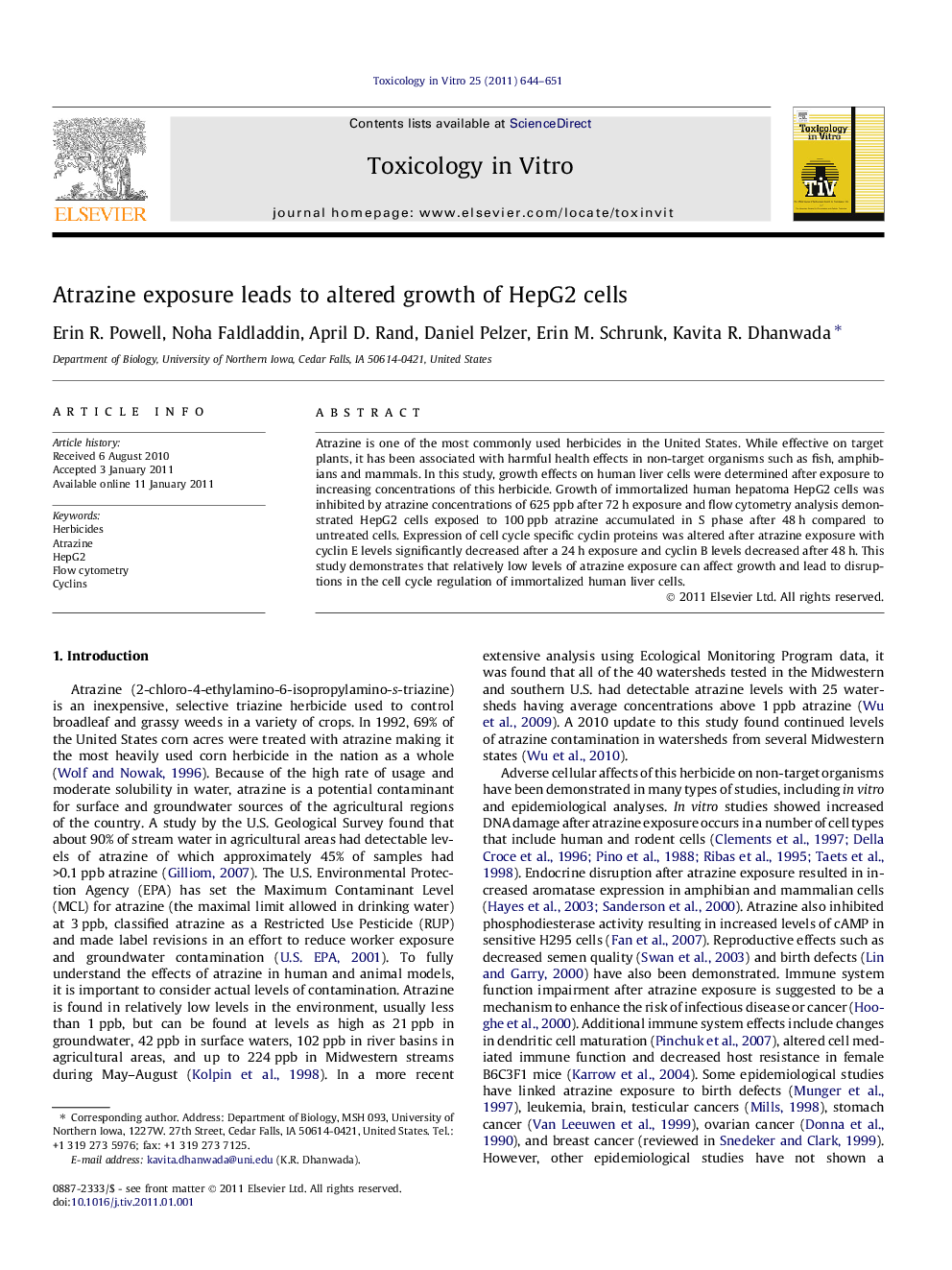| Article ID | Journal | Published Year | Pages | File Type |
|---|---|---|---|---|
| 5863141 | Toxicology in Vitro | 2011 | 8 Pages |
Atrazine is one of the most commonly used herbicides in the United States. While effective on target plants, it has been associated with harmful health effects in non-target organisms such as fish, amphibians and mammals. In this study, growth effects on human liver cells were determined after exposure to increasing concentrations of this herbicide. Growth of immortalized human hepatoma HepG2 cells was inhibited by atrazine concentrations of 625Â ppb after 72Â h exposure and flow cytometry analysis demonstrated HepG2 cells exposed to 100Â ppb atrazine accumulated in S phase after 48Â h compared to untreated cells. Expression of cell cycle specific cyclin proteins was altered after atrazine exposure with cyclin E levels significantly decreased after a 24Â h exposure and cyclin B levels decreased after 48Â h. This study demonstrates that relatively low levels of atrazine exposure can affect growth and lead to disruptions in the cell cycle regulation of immortalized human liver cells.
